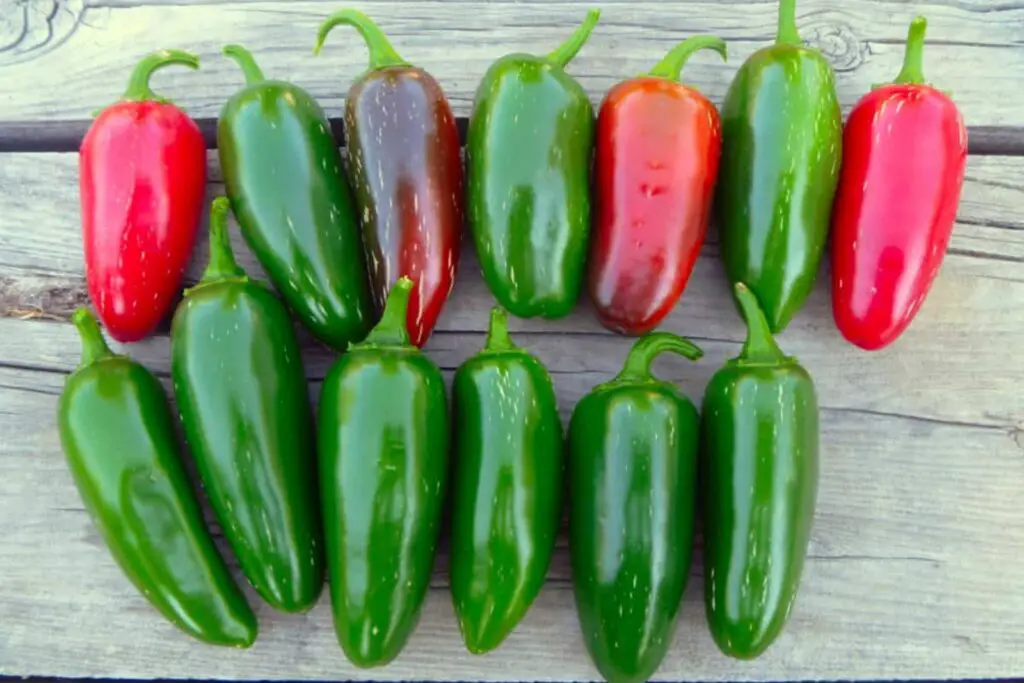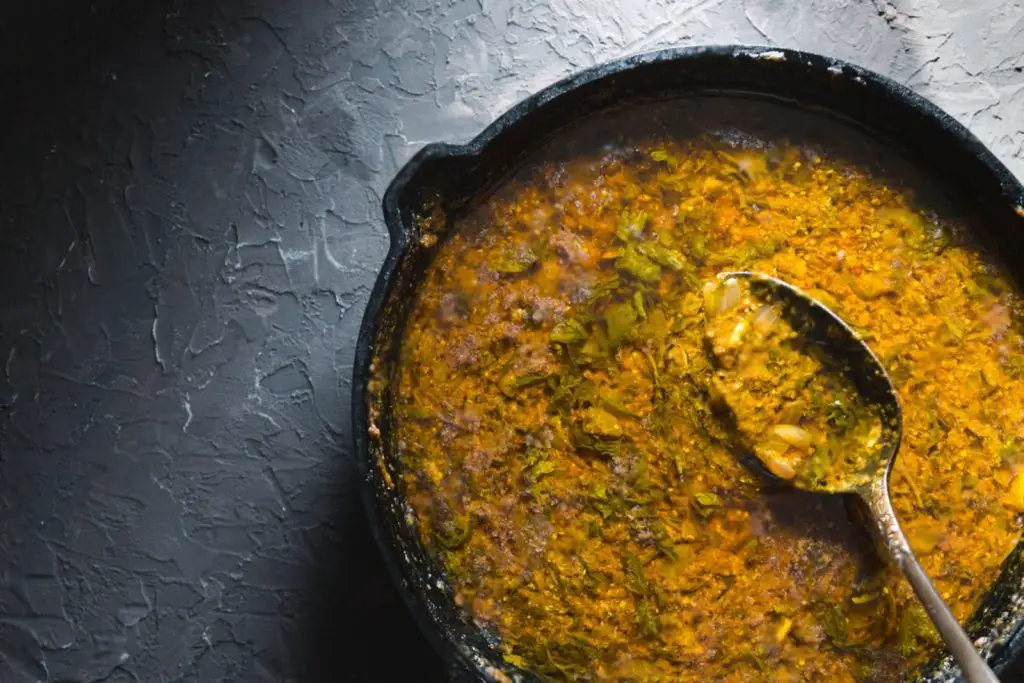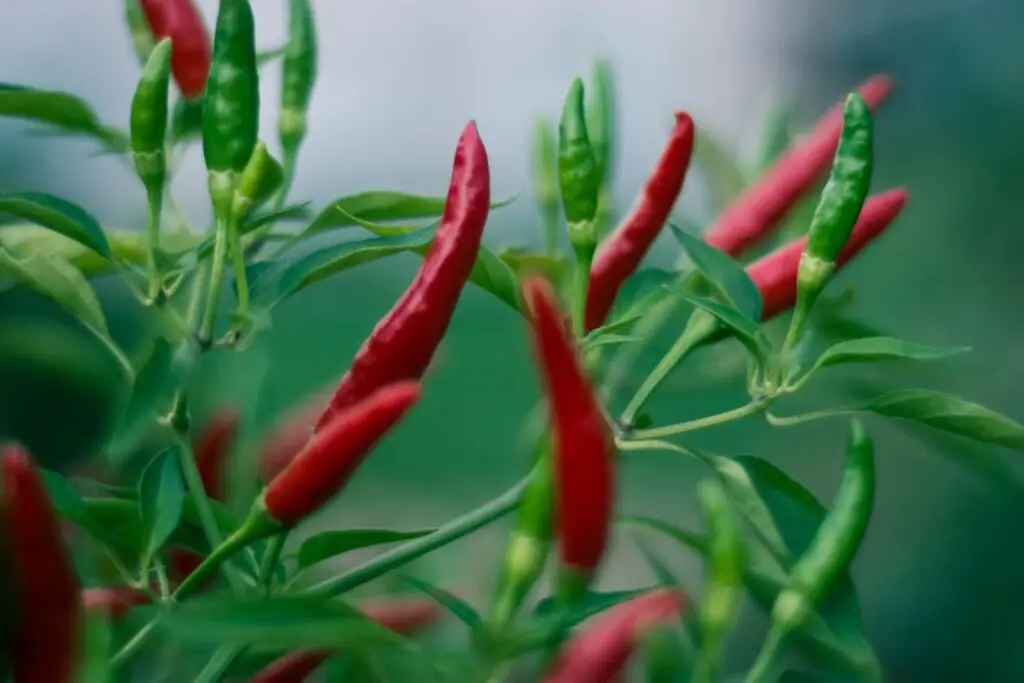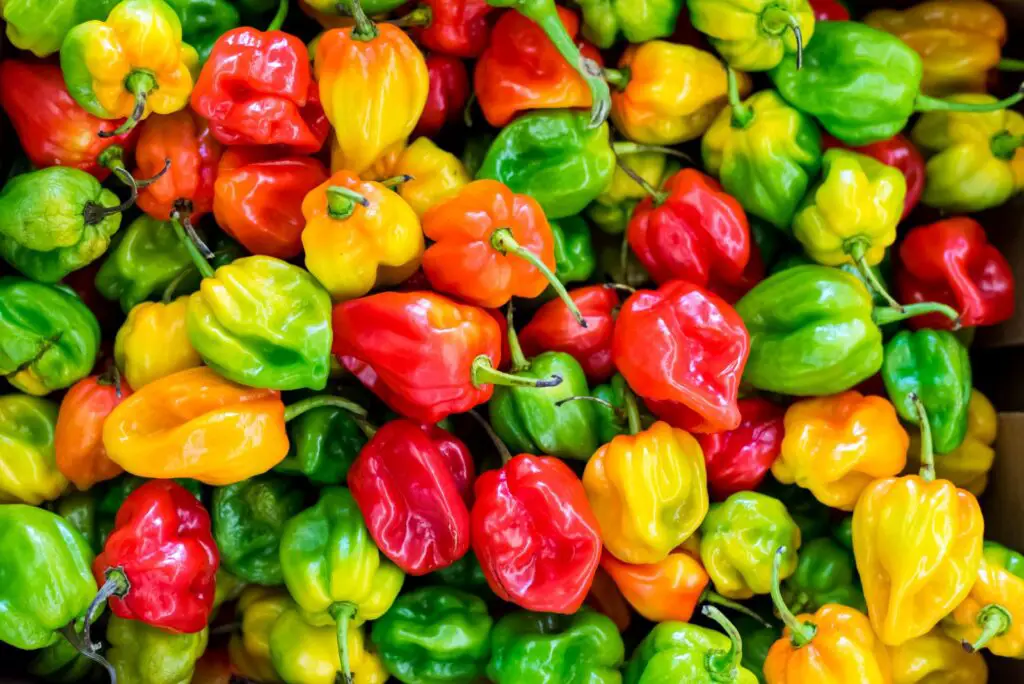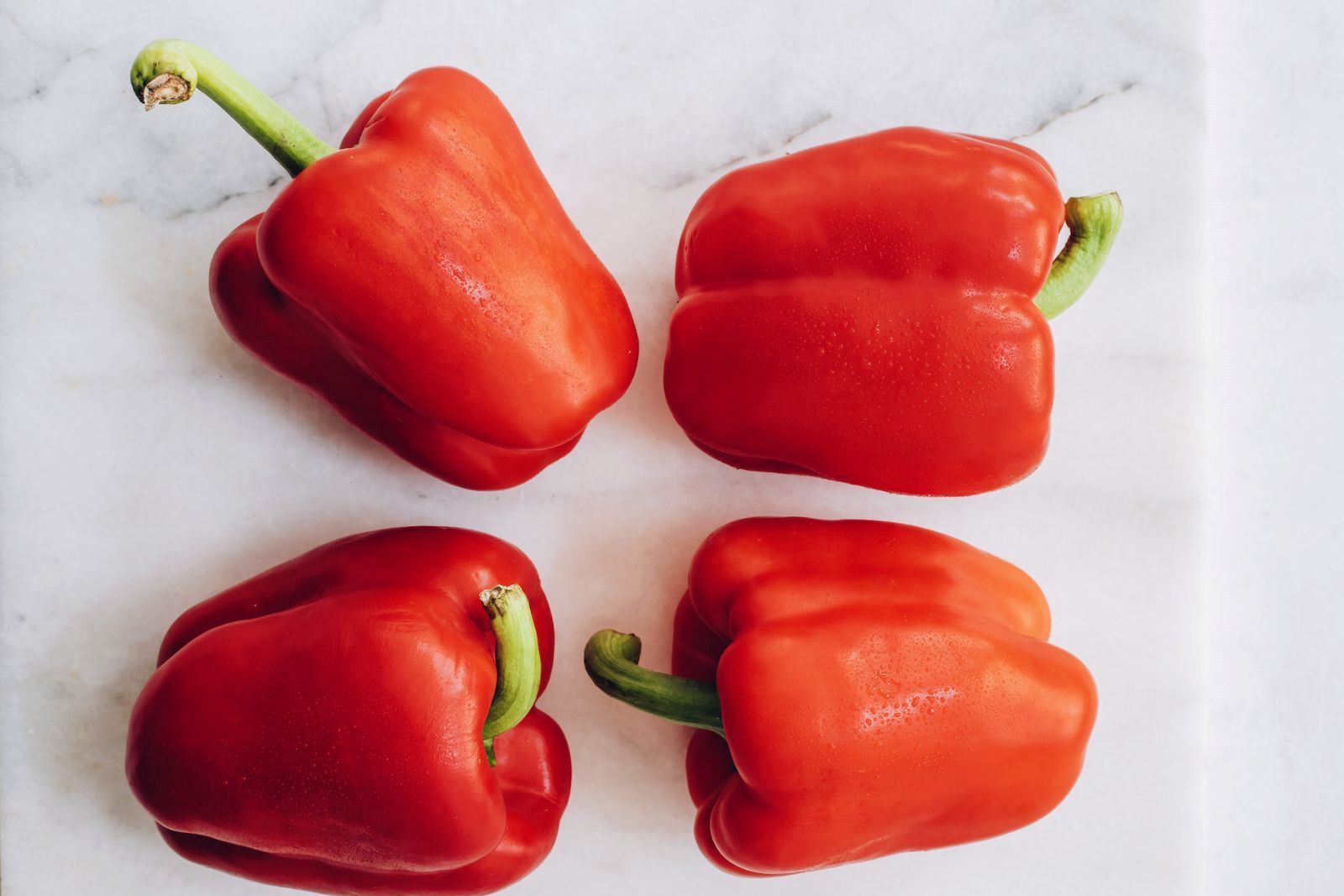
Red peppers, with their sweet and vibrant flavor, are a versatile ingredient that adds a pop of color and taste to a wide range of dishes. Whether you have an abundance of freshly harvested red peppers or want to take advantage of a great deal at the market, freezing them is an excellent way to preserve their freshness and enjoy their goodness long after the growing season ends. By following a few simple steps, you can freeze red peppers to maintain their flavor, texture, and nutritional value, allowing you to elevate your recipes with their delightful presence anytime you desire.
Here are the simple steps to freeze red peppers:
Step 1: Select and prepare the red peppers
Selecting firm and ripe red peppers is important because they will have the best flavor and texture. Look for peppers that have a vibrant red color and are free from any soft spots, wrinkles, or blemishes. Soft spots can indicate that the peppers are past their prime and may not taste as fresh.
Washing the peppers is crucial to remove any dirt, pesticides, or other contaminants that may be present on the surface. Even if you plan to remove the skin later, it’s still important to wash them to maintain hygiene and ensure that any potential contaminants are eliminated.
To wash the peppers, hold them under cool running water and gently rub the surface with your hands. This will help remove any dirt or residue. It’s recommended to use cool water instead of hot water to avoid partially cooking the peppers, especially if you plan to use them in a raw preparation.
After washing, it’s essential to dry the peppers thoroughly. Moisture can promote the growth of bacteria, and excess water can affect the texture of the peppers when cooking. You can pat them dry with a clean kitchen towel or allow them to air dry completely on a drying rack or clean surface.
Step 2: Decide on the desired form
Deciding on the desired form of red peppers before freezing them is important because it can impact how they are used in future recipes and how their texture is affected during the freezing process. Here are some considerations for each form:
- Whole peppers: Freezing red peppers whole is a good option if you plan to use them for stuffed peppers or as a side dish. Freezing them in this form preserves their shape and allows you to stuff them later with various fillings. However, keep in mind that freezing whole peppers can make the skin tougher and slightly alter the texture.
- Sliced peppers: Slicing red peppers before freezing is a versatile option that allows you to use them in a variety of dishes. Sliced peppers can be easily added to stir-fries, soups, stews, or sautés. Freezing them in this form can result in a slightly softer texture compared to fresh peppers, but they will still retain their flavor and work well in cooked dishes.
- Chopped peppers: If you frequently use chopped peppers in your recipes, freezing them in this form can be convenient. Chopped peppers can be easily added to omelets, sauces, salsas, or casseroles. It’s worth noting that freezing chopped peppers can lead to a softer texture, which may be desirable in certain recipes where softer peppers are desired.
When choosing the form, consider the specific recipes you plan to use the peppers in after freezing. Think about whether you prefer the peppers to have a firmer or softer texture in those dishes. Keep in mind that freezing can slightly alter the texture of the peppers, making them slightly softer. However, their flavor and nutritional value will remain intact.
Regardless of the form you choose, it’s important to properly package and seal the peppers to prevent freezer burn and maintain their quality during storage.
Step 3: Prepare the peppers for freezing
Preparing the red peppers for freezing involves removing the stem, seeds, and white membrane, and then cutting them into the desired size or form. Here’s why each step is important:
- Removing the stem: The stem of the red pepper is tough and can be difficult to chew. It’s best to remove it before freezing to ensure a pleasant texture when you use the peppers in your recipes later.
- Removing the seeds: The seeds of a red pepper can be bitter and may affect the overall flavor of the dish. Removing them before freezing helps eliminate any unwanted bitterness. Additionally, seeds can also contribute to a mushier texture when frozen, so removing them ensures a better texture when you use the peppers later.
- Removing the white membrane: The white membrane, also known as the pith, is found inside the red pepper and can be bitter as well. Removing it along with the seeds helps improve the overall flavor of the peppers and ensures a more enjoyable eating experience.
- Cutting into desired size or form: Depending on your preference and the intended use of the peppers, you can cut them into halves, quarters, slices, or small pieces. This step allows you to portion the peppers according to your recipes and makes them more convenient to use later. Slicing or chopping the peppers into smaller pieces also allows for quicker and more even freezing.
Step 4: Blanch the red peppers (optional)
Blanching the red peppers before freezing is an optional step that can help preserve their color, texture, and nutritional value over an extended period. Here’s why blanching is beneficial:
- Color preservation: Blanching helps retain the vibrant red color of the peppers. It helps inactivate enzymes present in the peppers that can cause color changes, such as browning or fading, during freezing and storage. This ensures that the peppers maintain their appealing appearance even after they are thawed and used in recipes.
- Texture retention: Blanching red peppers briefly before freezing helps to partially cook them. This process can help to soften the peppers slightly, making them more tender and retaining their crispness. It also helps to break down the cell walls slightly, which can result in a better texture when the peppers are cooked or used in dishes later.
- Nutritional value preservation: Blanching red peppers for a short period of time helps to preserve their nutritional value. It can help to destroy bacteria and enzymes that can cause nutrient loss during freezing. By blanching, you can maintain the essential vitamins, minerals, and antioxidants present in the peppers, ensuring that they retain their nutritional benefits when consumed.
To blanch the red peppers, follow these steps:
- Bring a large pot of water to a rolling boil. The pot should be big enough to accommodate the peppers comfortably without overcrowding.
- Carefully add the prepared red peppers to the boiling water. Ensure that they are fully submerged.
- Allow the peppers to boil for a couple of minutes. The exact time may vary depending on the size of the peppers, but generally, 2-3 minutes should be sufficient. Blanching time should be kept short to avoid overcooking the peppers.
- After the blanching time, promptly remove the peppers from the boiling water and transfer them to a bowl filled with ice water. This rapid cooling process, known as “shocking,” helps stop the cooking process and preserves the color and texture.
- Allow the peppers to cool in the ice water for a few minutes until they are completely cooled.
- Drain the peppers well and pat them dry using a kitchen towel or paper towels. Ensuring that they are dry before freezing helps prevent ice crystals from forming and maintains the quality of the peppers.
Can I freeze red pepper slices or pieces directly without blanching or cooking them?
Yes, you can freeze red pepper slices or pieces directly without blanching or cooking them. While blanching can help preserve the color and texture of the peppers, it is not necessary for freezing. Simply ensure that the slices or pieces are clean, dry, and properly packaged in freezer-safe bags or containers to prevent freezer burn.
Step 5: Package the peppers
Packaging the prepared red peppers properly is crucial to maintain their quality during freezing and storage. Here’s why it’s important to follow the recommended steps:
- Freezer-safe bags or airtight containers: It’s essential to use packaging materials specifically designed for freezer storage. Freezer-safe bags or airtight containers help to prevent freezer burn, which can occur when air comes into contact with the peppers. Freezer burn can cause the peppers to become dry, discolored, and develop an off-flavor. These specialized containers also provide a barrier against moisture loss, maintaining the peppers’ texture and flavor.
- Small portions: Packaging the peppers in small portions allows you to thaw only the amount you need for a particular recipe, minimizing waste. When freezing in bulk, it can be challenging to separate the desired quantity later. By portioning the peppers, you can easily remove the required amount without thawing the entire batch.
- Air removal: Removing as much air as possible from the bags or containers is crucial to prevent freezer burn and maintain the quality of the peppers. Air contains moisture, and when it comes into contact with the peppers, it can cause ice crystals to form, leading to texture deterioration. Squeezing out excess air from the bags or selecting airtight containers that minimize air exposure helps preserve the peppers’ flavor, texture, and appearance.
To package the red peppers properly:
- Fill the freezer-safe bags or airtight containers with the prepared red peppers. Leave some space at the top to allow for expansion during freezing.
- If using bags, press out as much air as possible before sealing them. A convenient method is to seal the bags almost completely, leaving a small opening. Then, gently press out the air while sealing the remaining part of the bag.
- If using airtight containers, ensure that the lids are tightly sealed to prevent air from entering.
- Label the bags or containers with the date of freezing to keep track of their freshness. It’s also helpful to note the form of the peppers (whole, sliced, or chopped) and the quantity.
- Place the bags or containers in the freezer in a way that allows for efficient airflow and prevents crushing or overcrowding.
Step 6: Label and date the packages
Labeling and dating the packages of frozen red peppers is an important step to help you keep track of the variety and freezing date. Here’s why it’s important and how it can benefit you:
- Identification of variety: If you have multiple types of red peppers or if you’ve used different varieties, labeling each package allows you to easily identify the specific variety when you need to use them. Different varieties may have slightly different flavors or textures, so knowing which variety you have can help you choose the right peppers for a particular recipe.
- Proper order of use: By labeling the packages with the freezing date, you can ensure that you use the oldest peppers first. This follows the principle of first in, first out (FIFO) and helps prevent the peppers from being stored for too long and potentially losing quality. By using the oldest peppers first, you can rotate your frozen stock and avoid letting the peppers sit in the freezer for an extended period.
- Quality control: Knowing the freezing date allows you to gauge the overall freshness and quality of the frozen red peppers. Over time, frozen vegetables can lose flavor, texture, and nutritional value. By having the date labeled on the package, you can ensure that you use the peppers within a reasonable time frame to maintain the best quality.
To label the packages effectively, consider the following tips:
- Use a permanent marker or freezer-safe labels: Ensure that the labeling material is suitable for freezer use and won’t smudge or fade over time. Permanent markers or specifically designed freezer labels work well for this purpose.
- Include the variety or type of red pepper: If you have different varieties of red peppers, write down the name or type on the label. This information will be helpful when selecting the peppers for specific recipes or when you want to try different flavors.
- Add the date of freezing: Clearly write the date when the red peppers were frozen. You can use the month, day, and year format (e.g., DD/MM/YYYY) or any format that is easy for you to understand. Make sure the date is legible and visible on the package.
Step 7: Freeze the peppers
Freezing the packaged red peppers properly is crucial for maintaining their quality and preventing them from sticking together. Here’s why the freezing process is important and how to do it correctly:
- Prevent sticking together: Placing the packaged red peppers in a single layer on a baking sheet or flat surface for initial freezing helps prevent them from sticking together. When the peppers freeze individually, it becomes easier to remove the desired quantity from the freezer without thawing the whole batch. This method allows for better portion control and prevents clumping or clumping of the peppers.
- Individually frozen peppers: By initially freezing the peppers in a single layer, each pepper freezes separately, which ensures that they retain their individual shape and texture. If the peppers were packed together in a clump, they might freeze into a solid mass, making it challenging to separate and use them later. Freezing them individually also promotes quicker freezing and helps preserve their overall quality.
- Transfer to designated freezer spot: Once the peppers are individually frozen, transfer them to a designated spot in the freezer where they can be stored for an extended period. This spot should maintain a consistent freezing temperature and be easily accessible for retrieval. Organizing the frozen peppers in a specific area helps you locate them quickly and prevents them from getting lost or buried in the freezer.
To freeze the packaged red peppers:
- Arrange the packages in a single layer on a baking sheet or flat surface that fits in your freezer. Make sure the packages are not touching each other.
- Place the baking sheet or flat surface with the packages in the freezer. Ensure that it sits flat and is stable to avoid any spills or accidents.
- Allow the red peppers to freeze individually. This initial freezing process typically takes a few hours, but it may vary depending on the size and thickness of the peppers.
- Once the peppers are individually frozen, transfer them to a designated spot in the freezer. You can stack the packages neatly, ensuring easy access and visibility.
Other related questions
How do I defrost frozen red peppers?
To defrost frozen red peppers, there are a few methods you can use. One option is to transfer the desired amount of frozen peppers to a resealable plastic bag and place them in the refrigerator overnight. Another method is to thaw them in a microwave-safe dish using the defrost setting, stirring occasionally to ensure even thawing. Alternatively, you can add the frozen peppers directly to soups, stews, or stir-fries during cooking, allowing them to thaw and cook simultaneously. Avoid using hot water or leaving the peppers at room temperature for an extended period to prevent bacterial growth.
How long can I freeze red peppers in the freezer?
You can freeze red peppers in the freezer for an extended period, but for the best quality, it is recommended to consume them within 8 to 12 months. While the peppers may still be safe to eat after this time, their flavor, texture, and nutritional value may gradually decline. To maintain optimal quality, it is generally advised to use the frozen red peppers within 6 months of freezing. Proper packaging, storage, and labeling can help ensure you use the peppers in a timely manner and enjoy them at their best.
Can I refreeze previously thawed red peppers?
It is generally not recommended to refreeze previously thawed red peppers. When you thaw the peppers, ice crystals melt, and moisture is released. Refreezing them can lead to texture deterioration and potentially compromise their flavor and quality. Additionally, the freeze-thaw cycle can promote the growth of bacteria, which can be a food safety concern. To avoid waste, it’s best to only thaw the amount of red peppers you need for a recipe or meal.
How do I know if my frozen red peppers have gone bad?
To determine if your frozen red peppers have gone bad, look for signs of freezer burn, such as discoloration, dryness, or a leathery texture. Freezer-burned peppers may have an off-flavor or an unpleasant smell. If the peppers have developed ice crystals or are clumped together, it could indicate moisture infiltration. Trust your senses and discard the peppers if they appear significantly different, have an unusual odor, or if you have any doubts about their safety or quality.
Can I use frozen red peppers with fresh ones?
Yes, you can use frozen red peppers alongside fresh ones in recipes. Combining frozen and fresh red peppers can add versatility and convenience to your dishes. However, keep in mind that frozen peppers may have a slightly different texture than fresh ones, as freezing can soften them. It’s best to add frozen peppers to cooked or heated dishes, as they may release more moisture when thawed. Adjust cooking times accordingly to ensure the desired texture and flavor balance between the frozen and fresh peppers.
Can I freeze red peppers that have already been cooked?
Yes, you can freeze red peppers that have already been cooked. However, the texture of the peppers may become softer after freezing and reheating. It is best to slightly undercook the peppers before freezing to account for the additional cooking during reheating, ensuring they don’t become overly mushy or overcooked.
Can I freeze red peppers that have been stuffed or filled with other ingredients?
It is generally not recommended to freeze red peppers that have been stuffed or filled with other ingredients. The filling or stuffing may have a different freezing and thawing requirement than the peppers themselves, which can affect the overall quality and texture of the dish. Additionally, the moisture content of the filling may result in undesirable texture changes during the freezing and thawing process.
Can I freeze red peppers together with other vegetables or ingredients in the same package?
Yes, you can freeze red peppers together with other vegetables or ingredients in the same package. However, it’s important to consider the compatibility of the ingredients and their individual freezing and thawing requirements. Choose vegetables and ingredients that have similar freezing times and textures to ensure even freezing and avoid any potential quality issues. Proper packaging and labeling are also essential to keep track of the different ingredients in the package.
Can I freeze red pepper puree or roasted red peppers?
Yes, you can freeze red pepper puree or roasted red peppers. Pureeing or roasting the red peppers before freezing can help preserve their flavor and texture. Simply transfer the puree or roasted peppers into freezer-safe containers or bags, leaving some headspace for expansion, and ensure they are tightly sealed before freezing.

